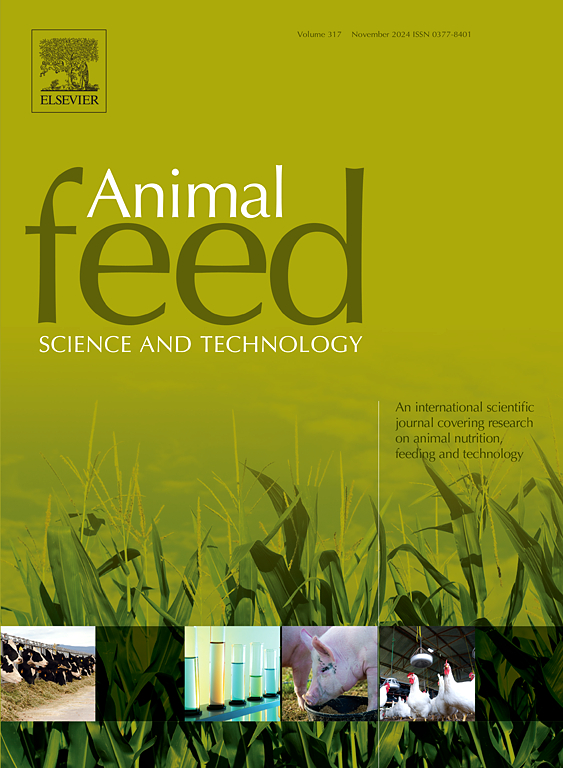Dietary characteristics and body weight input improve the prediction of enteric methane production from growing-finishing pigs
IF 2.5
2区 农林科学
Q1 AGRICULTURE, DAIRY & ANIMAL SCIENCE
引用次数: 0
Abstract
The objective of the present study was to identify dietary and animal factors that affect enteric methane (CH4) production in growing-finishing pigs. Moreover, the study aims to develop and compare the predictive accuracy of the developed models with the existing equations using the Tier 1 approach and equations considering nutrient availability. A dataset from 13 studies containing 290 individual animal observations on 107 growing-finishing pigs was used to develop the prediction model for enteric CH4 production. The predictive ability of the newly developed models was evaluated and compared with the extant equation proposed by the Intergovernmental Panel on Climate Change (IPCC) Tier 1 approach and extant prediction equations that consider substrate available for fermentation. Production of enteric CH4 was predicted by fitting mixed-effects models with random effects of animal and study. The newly developed models for enteric CH4 production, which include dietary characteristics and animal body weight, surpass the current IPCC Tier 1 model used in national inventories, demonstrating better precision and accuracy. Therefore, the equations developed in this study can be used in the pork industry to estimate the effect of feeding strategies to mitigate enteric CH4 production from growing-finishing pigs and to improve the national inventories of CH4 production.
求助全文
约1分钟内获得全文
求助全文
来源期刊

Animal Feed Science and Technology
农林科学-奶制品与动物科学
CiteScore
6.00
自引率
6.20%
发文量
266
审稿时长
3 months
期刊介绍:
Animal Feed Science and Technology is a unique journal publishing scientific papers of international interest focusing on animal feeds and their feeding.
Papers describing research on feed for ruminants and non-ruminants, including poultry, horses, companion animals and aquatic animals, are welcome.
The journal covers the following areas:
Nutritive value of feeds (e.g., assessment, improvement)
Methods of conserving and processing feeds that affect their nutritional value
Agronomic and climatic factors influencing the nutritive value of feeds
Utilization of feeds and the improvement of such
Metabolic, production, reproduction and health responses, as well as potential environmental impacts, of diet inputs and feed technologies (e.g., feeds, feed additives, feed components, mycotoxins)
Mathematical models relating directly to animal-feed interactions
Analytical and experimental methods for feed evaluation
Environmental impacts of feed technologies in animal production.
 求助内容:
求助内容: 应助结果提醒方式:
应助结果提醒方式:


